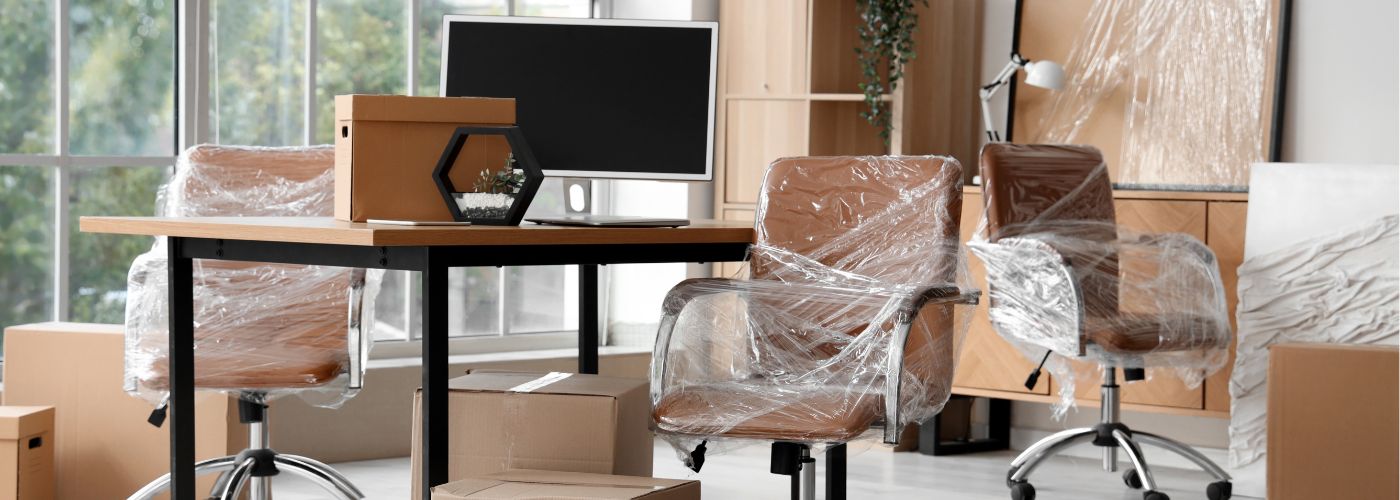Moving an office is more than just packing up desks and hauling boxes; it’s an opportunity to redefine your workspace, and breathe fresh life. We’ll be going over the best tips on how to move your office. So, let’s explore practical strategies to ensure your office move is easy and stress-free while maximizing productivity!
How To Plan Your Office Move
Planning an office move involves much more than simply packing up desks and relocating. It’s essential to think strategically about how your new space can enhance productivity and foster collaboration among teams.
Begin by assessing the needs of your employees: consider conducting a survey that captures their insights on workspace layout, natural light preferences, and access to communal areas. This not only ensures a smoother transition but also fosters employee buy-in for the new environment.
Once you have a clear vision, create a timeline that prioritizes key milestones—such as securing permits or setting up telecommunications—while allowing some flexibility for unexpected challenges. Utilize project management tools to keep everyone informed and engaged throughout the process; transparency helps mitigate anxiety associated with change.
Finally, don’t underestimate the importance of creating an impactful moving day experience that celebrates this fresh start, whether through team-building activities or personal touches like personalized workspaces.
Establish A Timeline For Your Move
Creating a timeline for your move is essential in transforming an overwhelming process into a manageable one. Start by breaking down your moving journey into distinct phases, such as preparation, packing, and settling in. Begin with the departure date firmly etched in your mind—this will serve as your anchor point.

Working backward from that date, set milestones for completing tasks like decluttering, sourcing packing supplies, and scheduling utility transfers. This reverse engineering ensures you stay on track while also giving yourself enough breathing room to address unexpected challenges.
Beyond the logistical aspects, consider incorporating elements of self-care into your timeline to alleviate stress during this transitional phase. If possible, allocate specific days solely for relaxation or exploring the new neighborhood once you’ve settled in.
Remember to celebrate small victories along the way—whether it’s finishing up packing or successfully organizing a garage sale—as these moments infuse positivity into an otherwise daunting task. This is one of the best tips on how to move your office.
Consider Hiring Professional Office Movers
Transitioning your office to a new location is more than just relocating furniture; it’s an intricate choreography of logistics, time management, and teamwork. Professional office movers bring not only muscle but also expertise that can streamline the entire process.
Their trained teams understand the nuances of moving delicate equipment, such as computers and servers, ensuring they arrive at their destination intact and operational. This minimizes downtime, allowing your business to operate smoothly during what could otherwise be a chaotic period.
Moreover, these professionals often have access to specialized tools and vehicles designed specifically for office moves. Imagine bypassing the hassle of renting trucks or scrambling to find packing materials — professional movers provide all that in one service package.
They can also offer valuable insights on efficient space planning at your new site, helping you optimize your workspace right from day one. Investing in experienced movers isn’t just about convenience; it’s about setting a solid foundation for your team’s productivity!
Organize Your Office Furniture Moving
Shifting your office furniture isn’t merely a physical task—it’s an opportunity to rethink your workspace dynamics. Start by assessing your current workspace and identifying items that no longer serve their purpose.

This process not only includes decluttering desks and storage areas but also offers a chance to rethink how you organize your office furniture moving forward. Consider creative layouts that foster collaboration or boost productivity, making the new space reflect both functionality and comfort.
Once you’ve sorted through your belongings, consider enlisting employees in the planning phase. Their insights can optimize space usage based on day-to-day workflows, ensuring everyone feels invested during the transition.
Additionally, employing project management software to track tasks—from booking moving trucks to coordinating IT setup—can provide clarity amid chaos. As you unpack in your new location, seize this moment to redefine team dynamics with an inviting aesthetic.
Tips To Pack Your Office Equipment Safely
When packing your office equipment, it’s vital to approach the task with a strategic mindset. Start by categorizing items based on their fragility. For instance, electronics such as monitors and printers should receive special attention. Pack each fragile item individually in bubble wrap or foam padding before placing it in sturdy boxes.
Consider using dividers within the boxes to prevent movement during transit, minimizing the risk of damage from jostling.
Additionally, don’t overlook smaller items like cables and peripherals—labeling is key here. Utilize zip-lock bags for organizing cables and attach a label indicating their corresponding device.
This simple step will save you considerable frustration during unpacking when you’re eager to set everything up again! Before sealing your boxes, review all contents against an inventory list to ensure nothing is forgotten. This practice not only helps keep track but also gives you peace of mind that you packed efficiently.
Set Up Your IT Equipment & Internet
Establishing a strong IT infrastructure and reliable internet connection during an office move is essential for office moving. One often-overlooked aspect is the direct impact on employee productivity. Delays in setting up technology can lead to frustration, loss of momentum, and decreased morale.
Imagine the disruption of a team eager to collaborate but unable to access critical software or share files due to insufficient connectivity. Prioritizing this setup not only minimizes downtime but also signals that leadership values efficiency and work quality.
Moreover, taking the time to evaluate your equipment during the move presents a unique opportunity for upgrades or replacements that align with current business needs. This might be the perfect chance to transition to more efficient systems like unified communication tools or cloud-based solutions, which foster collaboration regardless of physical location.
This is one of the most overlooked things on how to move your office.


